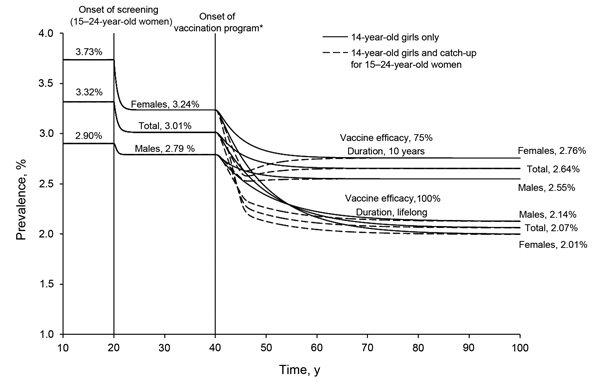Volume 21, Number 6—June 2015
Research
Cost-effectiveness of Chlamydia Vaccination Programs for Young Women
Figure 2

Figure 2. Time-prevalence chart for annual screening for 15–24-year-old women and a hypothetical chlamydia vaccine program for preadolescent girls (14 years of age) and women 15–24 years of age in the United States from the main analyses. We separated the start of the different programs (i.e., screening and vaccination) for illustrative purposes and to avoid clutter. When estimating the health and economic outcomes, we assumed that the strategy being analyzed started at the 20-year mark and the outcomes were tracked over a 50-year period (analytic horizon) ending at the 70-year mark. *Includes the existing annual screening (15–24-year-old women) strategy. Screening and vaccination coverage were 30% for all applicable age groups.
Page created: May 15, 2015
Page updated: May 15, 2015
Page reviewed: May 15, 2015
The conclusions, findings, and opinions expressed by authors contributing to this journal do not necessarily reflect the official position of the U.S. Department of Health and Human Services, the Public Health Service, the Centers for Disease Control and Prevention, or the authors' affiliated institutions. Use of trade names is for identification only and does not imply endorsement by any of the groups named above.